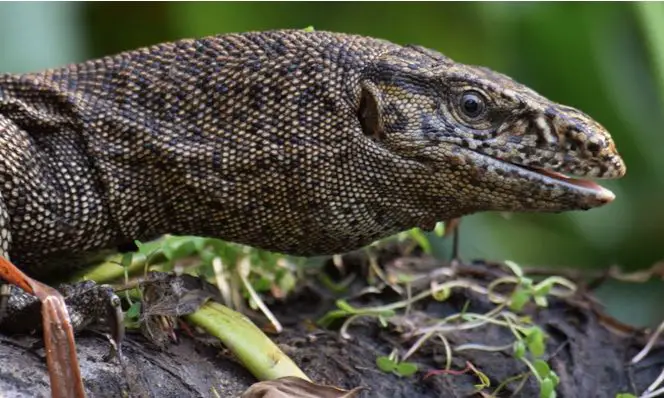The Nile crocodile (Crocodylus niloticus) is one of the largest crocodiles living today—second only to saltwater crocodile. It is fairly common in the sub-Saharan Africa including central and eastern Africa.
The crocodile reaches the maximum size of 4.5 to 5.5 m (14 ft 9 in to 18 ft 1 in) but adult males average 3.3 to 5 m (10 ft 10 in to 16 ft 5 in) and weigh as much as 150 to 700 kg (330 to 1,540 lb).
Nile crocodiles are found throughout Egypt, Red Sea (Israel), South Sudan, Tanzania, Zambia, South Africa, Ethiopia, Botswana, Kenya, Cameroon, Somalia, and Madagascar.
They will make homes in a wide variety of habitats such as brackish streams, swamps, marshes, dams, fast flowing rivers, tidal lakes, and estuaries.
Nile croco diles feed on invertebrates including beetles, dragonflies, giant water bugs, crickets, true bugs, water snails, and mollusks. They also eat catfish, striped mullet, bass, lungfish, African pikes, Nile perch, and sharks.
diles feed on invertebrates including beetles, dragonflies, giant water bugs, crickets, true bugs, water snails, and mollusks. They also eat catfish, striped mullet, bass, lungfish, African pikes, Nile perch, and sharks.
Crocodiles likely eat goliath frog, African common toad, reed frog, wading birds, waterfowls, African darters, pelicans, Egyptian geese, monkeys, duikers, Thomson’s gazelles, African marsh rat, greater cane rat, pangolins, hares, baboons, aardvarks, and bats.
Nile crocodiles spend 6 – 7 hours each day basking in the sun. They do so by leaving their jaws open while staying motionless.
They have the ability to bite with a force of 22 kN (5,000 lbf).
Nile crocodiles reach the maturity at 12 – 16 years age. Females mature earlier than males. They can lay as many as 95 eggs in one time.
Predators of Nile crocodile’s eggs are Egyptian mongoose, Marabou storks, flour beetle, spotted hyenas, eagles, buzzards, vultures, owls, little egrets, goliath herons, corvids, largemouth bass, bull sharks, shoebills, pelicans, and African fish eagles.
Pollution and human hunting are possibly the only threats to the Nile crocodile’s global population.





